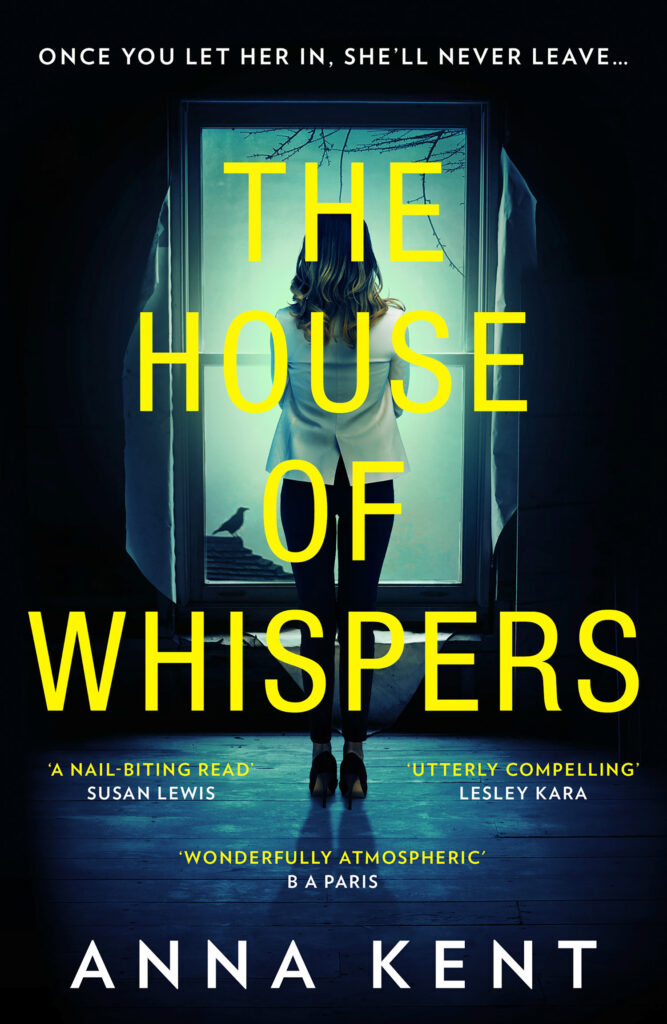 What you have written, past and present?
What you have written, past and present?
I was a journalist before I became an author, so I’ve written an awful lot of articles for publications in the UK and the UAE, and I was also a columnist for The Telegraph for six years and for Stylist Arabia for a year.
In terms of fiction, I have four psychological suspense novels out under my own name, Annabel Kantaria. They are Coming Home, The Disappearance, The One That Got Away and I Know You.
My fifth novel, called The House of Whispers under the pen name of Anna Kent, is due to be published on August 5.
I’m currently writing my sixth novel. It’s yet to get a title but I’m really excited about the premise!
What you are promoting now?
I’m promoting The House of Whispers by Anna Kent.
Tell us a bit about your process of writing?
I try to treat writing as I would an office job, so I have a strict routine: I put in about three or four solid hours in the morning, then I try to go to the gym or do an exercise class before lunch, then I fit in another hour or so of writing before it’s time to pick up my son from school.
If I can, I’ll work again in the afternoon but it’s not always possible. I never work at night and I try not to work at the weekend, too.
In terms of the writing process, every book begins with the seed of an idea: sometimes it’s the ending, sometimes the twist, or, in the case of the book I’m currently working on, it was the inciting incident – the event that kicks off the whole story. I try and flesh this out, sketching out how the character will change throughout the story, and working out a plot that will carry that internal change and also allow room for a few duplicitous scenes, red herrings and twists.
I try to use a system where I write scenes on index cards and move them about but, generally, once I’ve got a foggy idea of the story in my head, I just want to start writing. It’s a mistake to start too soon, though, as I invariably then get stuck about 20,000 words in because I haven’t planned enough.
There’s always a point, about halfway or three quarters of the way into a manuscript that I lose faith and start to doubt myself. Writing is a solitary process and it can be a challenge to keep up both the momentum and the self-belief. You just have to push on through and trust the process. Having a good support network of friends and family really helps.
How do you do structure your books?
They’re all different. Most of them have multiple viewpoints because I love seeing events through different people’s eyes.
In The House of Whispers, interviews with one of the characters are interlaced throughout the narrative, only you don’t know who is interviewing the person, nor why – you just know that something major has happened. The Disappearance started half-way through then tracked back, and it also had two timelines set about 50 years apart. I Know You was told with the benefit of hindsight, which allowed me to do a lot of foreshadowing to keep up the suspense, and The One That Got Away had alternate chapters from the points of view of a husband and wife.
I do love a clever structure, but they can be very tricky to pull off.
What do you find hard about writing?
The hardest thing for me is trying to come up with that million-dollar best-selling idea: the high-concept story that becomes the most talked-about book of the year!
I also hate it when I get stuck in my plot. It happens at some point in every book, and I’m antsy and stressed until I get through that block and start writing properly again.
Other than that, just trying to be creative, day in, day out, with little or no feedback on how I’m doing, and no colleagues to bounce ideas off. Keeping faith in myself that I can do it. Not knowing if my book is any good or not until I submit it to my agent when it’s finished. That’s tough.
What do you love about writing?
I love the creative freedom at the start of a new book, when the world really is your oyster. It’s like playing God. You have the power to create a whole world, and to populate it with whomever you like, and to make whatever you want happen to those people. There’s nothing like starting a fresh story. Even better if you know it’s a really fabulous idea!
Days when the words flow and the story just comes flying out through my fingers are also fabulous. There’s no feeling like it.


